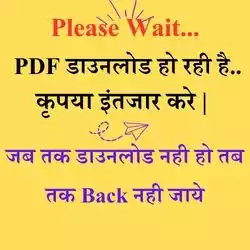CBSE class 12 GEOGRAPHY sample paper 2025 Solutions These Sample Papers cover the entire syllabus of the academic session 2022-23 .
CBSE class 12 GEOGRAPHY sample paper 2025
| Sample Paper | PAPER PDF |
| 1. Sample Paper Issued by the Board | Download PDF |
| Sample Paper- 01 | Download PDF |
| Sample Paper- 02 | Download PDF |
| Sample Paper- 03 | Download PDF |
The features of these sample test papers are as follows:
✓ The questions in the test paper have been compiled at par with the level of the exam.
✓ Test paper series have been conceptualized by expert faculty as per the strict parameters of latest Board syllabus and exam pattern.
✓ These Sample Papers cover the entire syllabus of the academic session 2022-23.
People are searching online on Google
Geography Sample Paper Class 12 with Solution
Class 12 Geography Sample Paper Term 1 with answers
Class 12 Geography Sample paper
Geography Sample Paper Class 12 2025
Geography Sample paper Class 12 in Hindi medium
Arihant Sample Paper Class 12 Geography PDF
Sample Paper Class 12 2025 Geography with solutions
Class 12 Geography Sample paper Term 2 with answers
CBSE class 12 GEOGRAPHY sample paper
Class 12 Geography sample paper 2025
Class 12 Geography Sample Paper with solution
Geography Sample paper Class 12 2025 with Solutions
Class 12 Geography Sample Paper Term 1 with answers
Geography Sample paper Class 12 in Hindi medium
Class 12 Geography Sample paper Term 2 with answers
Arihant Sample Paper Class 12 Geography PDF
class 12 geography sample paper 2022-23
CBSE class 12 GEOGRAPHY Syllabus
Part A : Fundamentals of Human Geography
Chapter 1: Human Geography
Chapter 2: People
Chapter 3: Human Activities
Chapter 4: Transport, Communication and Trade
Chapter 5: Human settlements
➲ Map Work
Part B : India: People and Economy
Chapter 6: People
Chapter 7: Human Settlements
Chapter 8: Resources and Development
Chapter 9: Transport, Communication and International Trade
Chapter 10: Geographical Perspective on selected issues and problems
➲ Map Work
Part- C : Practical Work in Geography Part II
Chapter 1: Processing of Data and Thematic Mapping
Chapter 2: Field Study or Spatial Information Technology
COURSE CONTENT
Part A : Fundamentals of Human Geography
Chapter 1: Human Geography :
➲ Nature and Scope
Chapter 2: People
• Population-Distribution, density and growth
• Population change-spatial patterns and structure; determinants of population change
• Population Composition – age-sex ratio; rural-urban composition
• Human development – concept; selected indicators, international comparisons
Chapter 3: Human Activities
• Primary activities – concept and changing trends; gathering, pastoral, mining, subsistence agriculture, modern agriculture; people engaged in agricultural and allied activities – some examples from selected countries
• Secondary activities-concept; manufacturing: types – household, small scale, large scale; agro based and mineral based industries; people engaged in secondary activities – some examples from selected countries
• Tertiary activities-concept; trade, transport and tourism; services; people engaged in tertiary activities – some examples from selected countries
• Quaternary activities-concept; people engaged in quaternary activities – case study from selected countries
Chapter 4: Transport, Communication and Trade
• Land transport – roads, railways; trans-continental railways
• Water transport- inland waterways; major ocean routes
• Air transport- Intercontinental air routes
• Oil and gas pipelines
• Satellite communication and cyber space- importance and usage for geographical information; use of GPS
• International trade- bases and changing patterns; ports as gateways of international trade; role of WTO in international trade
Chapter 5: Human settlements
• Settlement types – rural and urban; morphology of cities (case study); distribution of mega cities; problems of human settlements in developing countries
❒ Map : Map Work on identification of features based on 1-5 units on the outline Physical/Political map of World.
Part B : India: People and Economy
Chapter 6: People
• Population: distribution, density and growth; composition of population – linguistic, religious; sex, rural-urban and occupational-regional variations in growth of population
• Migration: international, national-causes and consequences
• Human development: selected indicators and regional patterns
• Population, environment and development
Chapter 7: Human Settlements
• Rural settlements – types and distribution
• Urban settlements – types, distribution and functional classification
Chapter 8: Resources and Development
• Land resources- general land use; agricultural land use; geographical conditions and distribution of major crops (Wheat, Rice, Tea, Coffee, Cotton, Jute, Sugarcane and Rubber); agricultural development and problems
• Water resources-availability and utilization-irrigation, domestic, industrial and other uses; scarcity of water and conservation methods-rain water harvesting and watershed management
• Mineral and energy resources- distribution of metallic (Iron ore, Copper, Bauxite, Manganese); non-metallic (Mica, Salt) minerals; conventional (Coal, Petroleum, Natural gas and Hydroelectricity) and non-conventional energy sources (solar, wind, biogas) and conservation
• Industries – types, factors of industrial location; distribution and changing pattern of selected industries-iron and steel, cotton textiles, sugar, petrochemicals, and knowledge based industries; impact of liberalization, privatization and globalization on industrial location; industrial clusters
• Planning in India- target group area planning (case study); idea of sustainable development (case study)
Chapter 9: Transport, Communication and International Trade
• Transport and communication-roads, railways, waterways and airways: oil and gas pipelines; Geographical information and communication net works
• International trade-changing pattern of indian’s foreign trade; sea ports and their hinterland and airports
Chapter 10: Geographical Perspective on selected issues and problems
• Environmental pollution; urban-waste disposal Urbanization, rural-urban migration; problems of slums Land degradation
❒ Map : Map work on locating and labeling of features based on above units on outline map of India.
Part- C : Practical Work in Geography Part II
Chapter 1: Processing of Data and Thematic Mapping
• Type and Sources of data: Primary, Secondary and other sources
• Tabulating and processing of data; calculation of averages, measures of central tendency
• Representation of data- construction of diagrams: bars, circles and flowchart; thematic maps; construction of dot; choropleth and isopleths maps
• Data analysis and generation of diagrams, graphs and other visual diagrams using computers
Chapter 2: Field Study or Spatial Information Technology
• Field visit and study: map orientation, observation and preparation of sketch; survey on any one of the local concerns; pollution, ground water changes, land use and land-use changes, poverty, energy issues, soil degradation, impact of floods and drought, catchment area of school, Market survey and Household survey (any one topic of local concern may be taken up for the study; observation and questionnaire survey may be adopted for the data collection; collected data may be tabulated and analyzed with diagrams and maps). Students can be given different topics to get more insight into various problems of society.
OR
• Spatial Information Technology
introduction to GIS; hardware requirements and software module; data formats; raster and vector data, data input, editing and topology building; data analysis; overlay and buffer.

